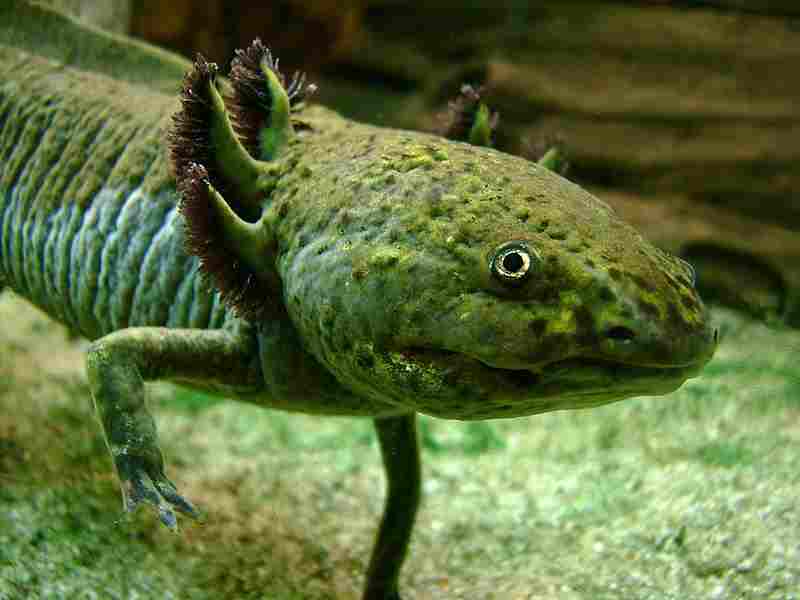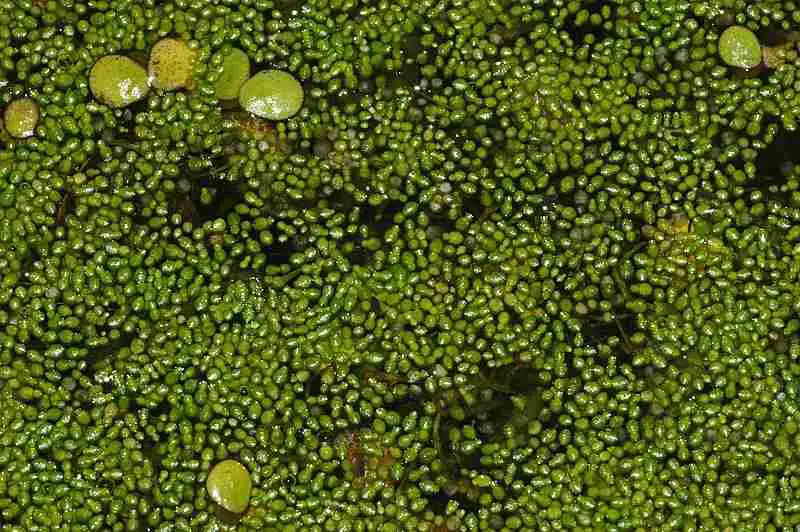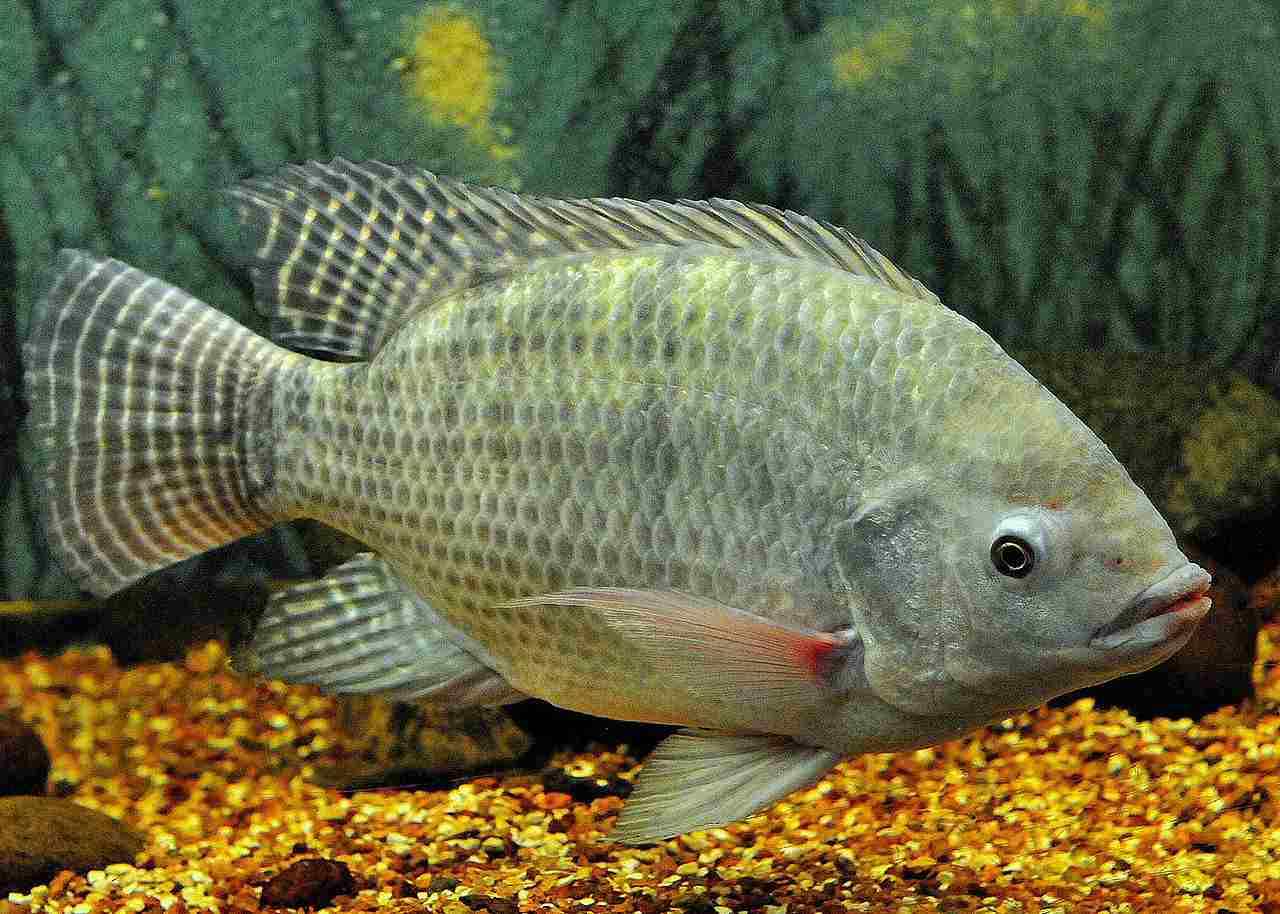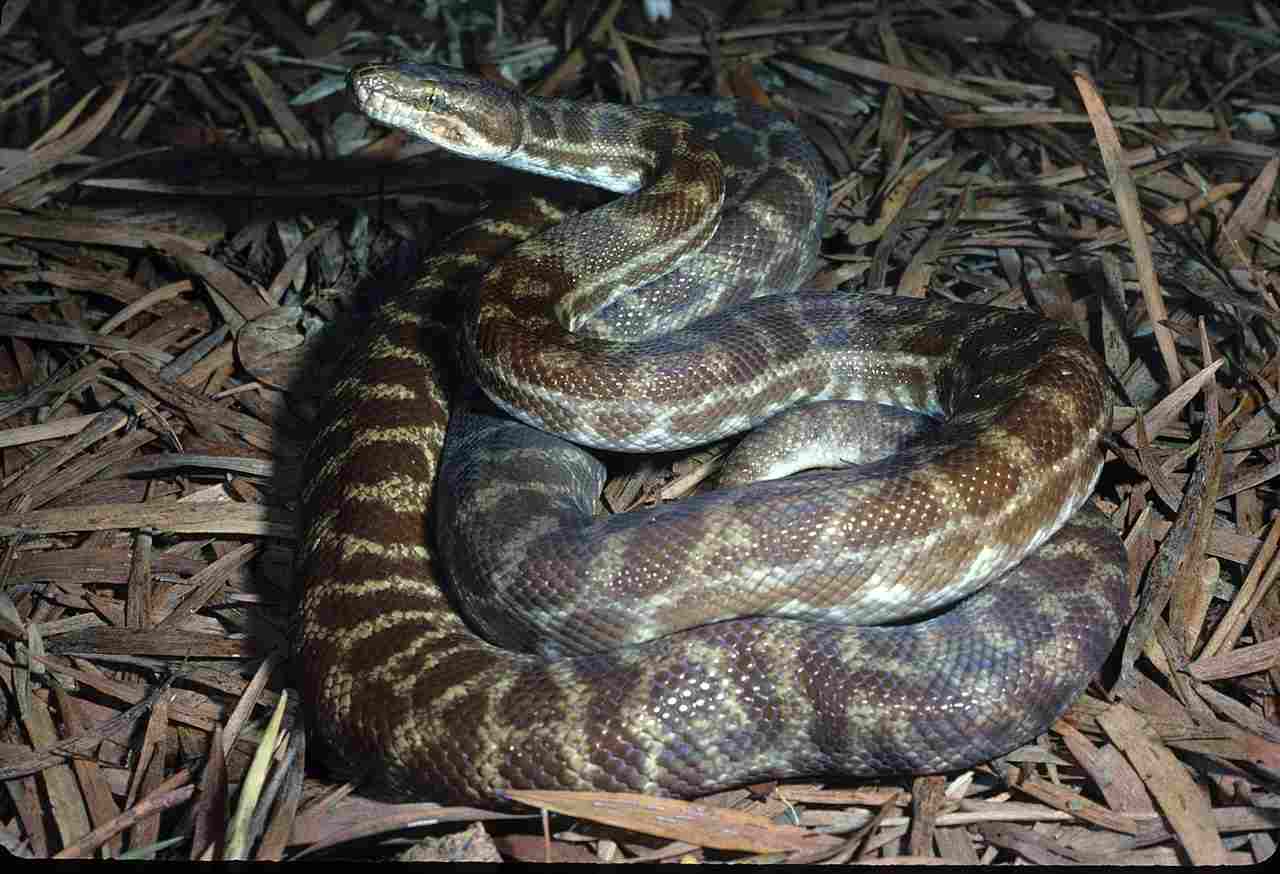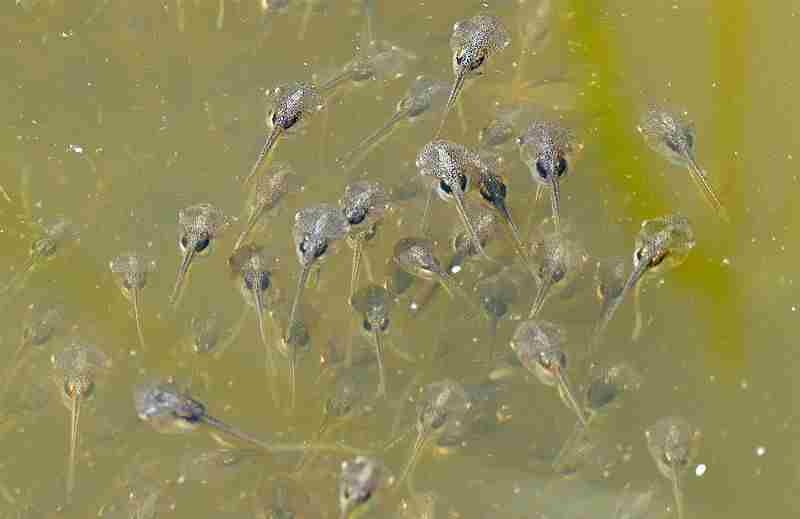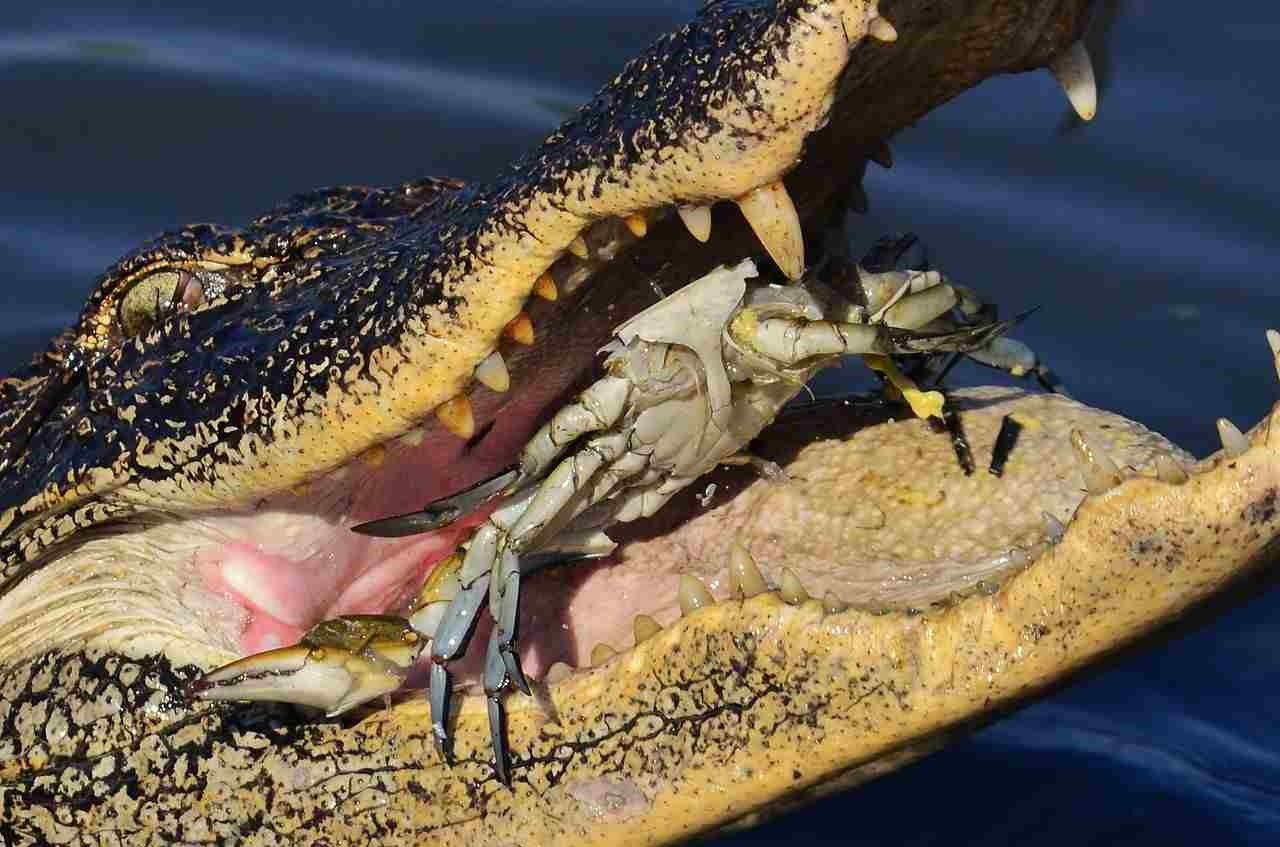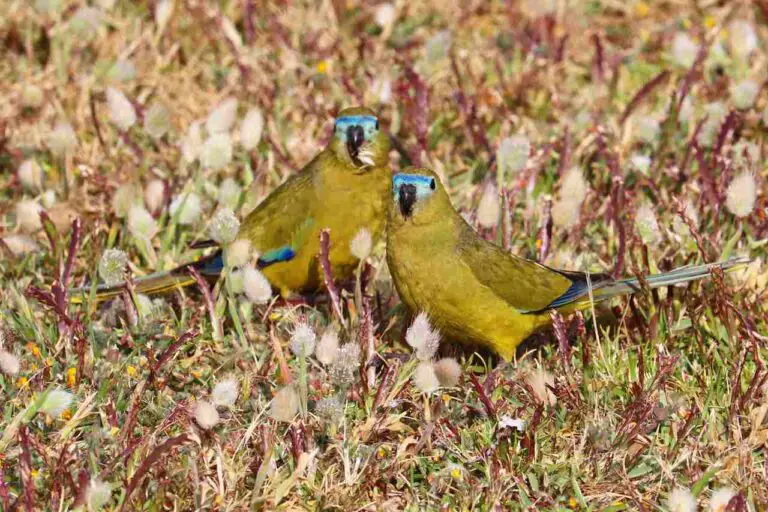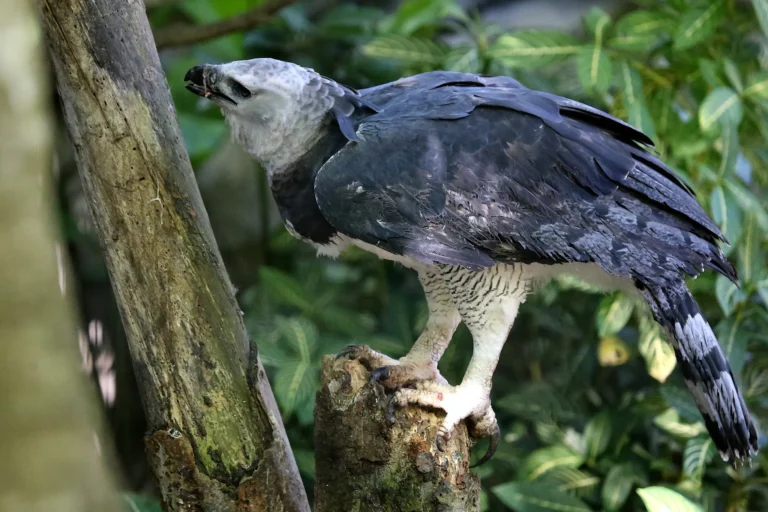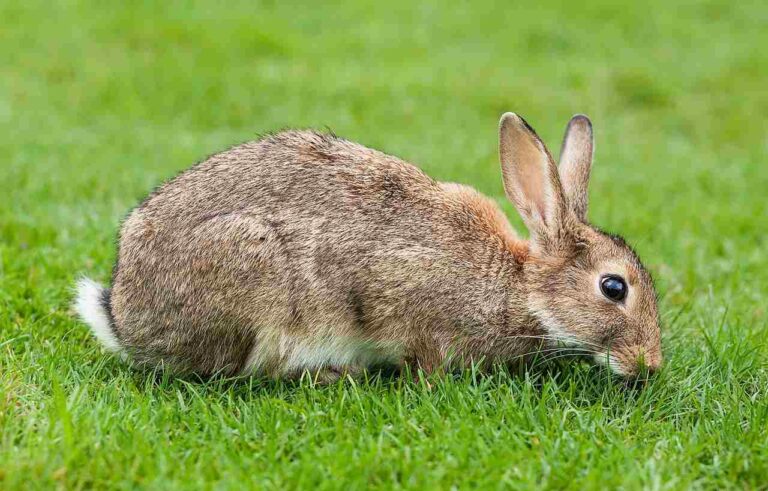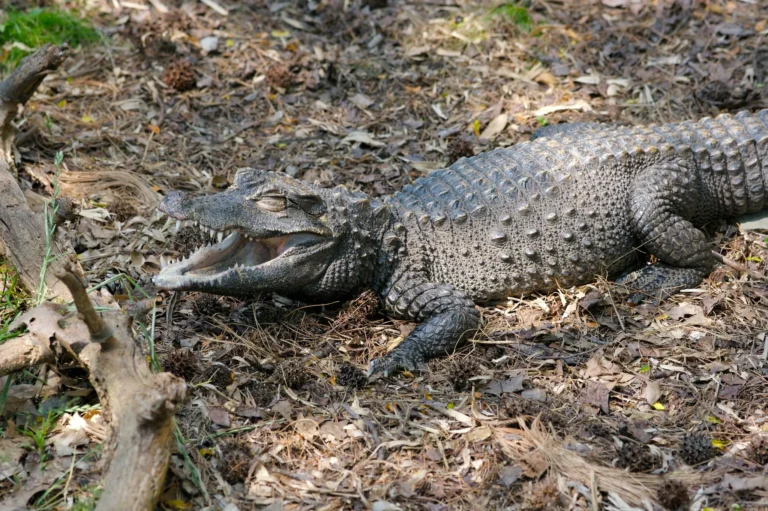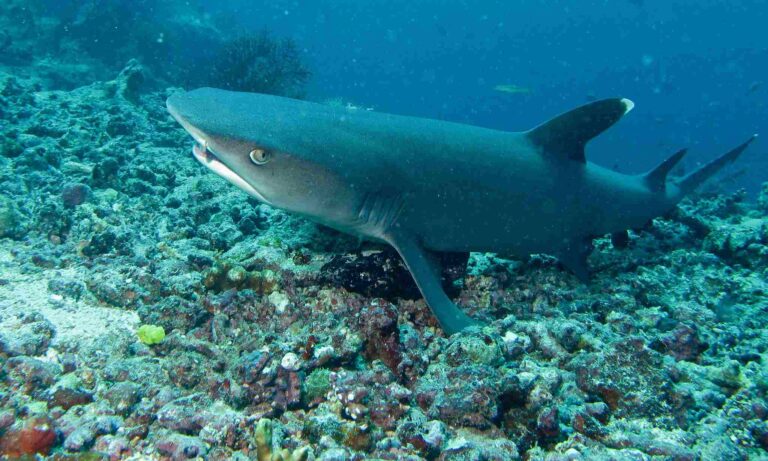What Eats Tadpoles? Overview of The Predators of Tadpoles
Animals that prey on tadpoles are; water scorpions, diving beetle larvae, dragonfly nymphs, water snakes, newts, fish (like trout, carp and bass), herons, rats, hedgehogs, turtles, juvenile alligators, and racoons. They are discussed in this article.
1. Water Scorpions
Water scorpions are aquatic insects that belong to the family Nepidae and are known for their long, slender bodies and unique breathing apparatus.
Water scorpions are well-adapted to their predatory lifestyle. They have powerful front legs that are modified into pincers, which they use to catch and hold onto their prey. Their long, slender bodies allow them to move stealthily through the water, making them efficient hunters.
One of the most interesting features of water scorpions is their breathing apparatus. They have a long, tube-like structure called a siphon that extends from their abdomen to the water’s surface. By positioning their siphon above the water, they can breathe air while remaining submerged. This adaptation allows them to stay hidden from their prey while still being able to breathe.
When it comes to tadpoles, water scorpions are opportunistic predators. They use their pincers to grab onto the tadpoles and inject them with a paralyzing venom. Once the tadpole is immobilized, the water scorpion feeds on its soft tissues.
Water scorpions are found in various freshwater habitats, including ponds, lakes, and slow-moving streams. They are excellent swimmers and can easily navigate through aquatic vegetation in search of prey.
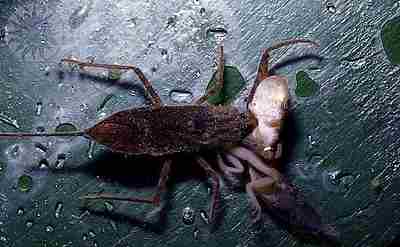
2. Diving Beetle Larvae
Diving beetle larvae are predators of tadpoles in aquatic ecosystems. These larvae, also known as water tigers, are the juvenile stage of diving beetles. They have a unique appearance with their elongated bodies, flattened heads, and sharp mandibles.
Diving beetle larvae are well-adapted for hunting tadpoles. They are strong swimmers and can move quickly through the water, using their flattened bodies and paddle-like legs to propel themselves. Their sharp mandibles are their primary weapon, allowing them to grasp and immobilize their prey.
These larvae are opportunistic feeders and will consume a variety of prey, including tadpoles. They are known for their voracious appetite and can consume multiple tadpoles in a short period. Once they capture a tadpole, they use their mandibles to puncture its body and inject digestive enzymes. The enzymes break down the tadpole’s tissues, allowing the diving beetle larvae to feed on the resulting liquid.
Diving beetle larvae are commonly found in freshwater habitats such as ponds, lakes, and slow-moving streams. They prefer areas with abundant vegetation where tadpoles are likely to be present. These larvae play an important role in regulating tadpole populations and maintaining the balance of aquatic ecosystems.
3. Dragonfly Nymph
Dragonfly nymphs are known to feed on tadpoles in aquatic environments. These nymphs are the larval stage of dragonflies and are well-equipped for hunting. With their elongated bodies and powerful jaws, they are perfectly adapted to capturing and consuming tadpoles.
Dragonfly nymphs are ambush predators, patiently waiting for their prey to come within striking distance. Once a tadpole is within reach, the nymph will extend its extendable jaws and swiftly grab hold of the unsuspecting tadpole. Their strong jaws allow them to immobilize the tadpole, preventing it from escaping.
These nymphs have a voracious appetite and can consume multiple tadpoles in a short period. They play a crucial role in controlling tadpole populations and maintaining the balance of aquatic ecosystems. By preying on tadpoles, dragonfly nymphs help to prevent overpopulation and ensure the survival of other aquatic organisms.
Dragonfly nymphs are commonly found in freshwater habitats such as ponds, lakes, and slow-moving streams. They prefer areas with abundant vegetation, as this provides cover for their hunting activities. These nymphs undergo a series of molts before eventually emerging as adult dragonflies, completing their life cycle.
4. Water Snakes
Water snakes are another predator of tadpoles in aquatic environments. These snakes are highly skilled hunters and have adapted to life in the water. With their streamlined bodies and excellent swimming abilities, they are able to navigate through the water with ease in search of prey.
Water snakes primarily feed on small aquatic animals, including tadpoles. They are opportunistic predators and will take advantage of any available food source.
When hunting tadpoles, water snakes use their keen eyesight to locate their prey. Once they spot a tadpole, they will swiftly swim towards it and capture it with their sharp teeth.
These snakes are non-venomous and rely on their powerful jaws to subdue their prey. They are able to swallow tadpoles whole, thanks to their flexible jaws and stretchy skin. Water snakes are known to consume multiple tadpoles in a single feeding session, helping to control tadpole populations in their habitat.
Water snakes are commonly found in freshwater habitats such as ponds, lakes, and slow-moving rivers. They prefer areas with ample vegetation, as this provides cover for their hunting activities. These snakes play an important role in the ecosystem by regulating tadpole populations and contributing to the overall balance of aquatic ecosystems.
In addition to tadpoles, water snakes also feed on small fish, frogs, and other aquatic invertebrates. They are an integral part of the food chain in some aquatic ecosystems.
5. Newts
Newts are another predator of tadpoles in aquatic environments. These small amphibians have a voracious appetite for tadpoles and play a significant role in controlling their populations.
Newts are skilled hunters and have adapted to life both in and out of the water. They have a streamlined body shape and powerful limbs that allow them to swim swiftly and catch their prey with precision.
When hunting tadpoles, newts use their keen eyesight to locate their targets. Once they spot a tadpole, they will quickly swim towards it and seize it with their agile tongues.
These amphibians have a diverse diet, but tadpoles are a favored food source. Newts are known to consume multiple tadpoles in a single feeding session, helping to keep tadpole populations in check. Their predatory behavior contributes to the overall balance of aquatic ecosystems.
Newts are commonly found in freshwater habitats such as ponds, lakes, and slow-moving rivers. They prefer areas with abundant vegetation, as this provides cover for their hunting activities. These amphibians not only prey on tadpoles but also feed on small invertebrates and insects.
6. Fish (like trout, carp and bass)
Fish, such as trout, carp, and bass, are formidable predators of tadpoles in aquatic ecosystems. These aquatic creatures have a keen eye for spotting their prey and are equipped with the necessary tools to capture and consume tadpoles efficiently.
1. Trout, known for their voracious appetite, are skilled hunters in freshwater habitats. They use their excellent vision to detect the movement of tadpoles in the water. Once a tadpole is spotted, trout swiftly swim towards it, using their streamlined bodies and powerful tails to propel themselves forward. With a quick snap of their jaws, they capture the tadpole and swallow it whole.
2. Carp, on the other hand, are bottom-dwelling fish that feed on a variety of aquatic organisms, including tadpoles. These opportunistic feeders use their sensitive barbels to detect the presence of tadpoles in the sediment or vegetation. Once located, carp use their specialized pharyngeal teeth to crush and consume the tadpoles.
3. Bass, known for their aggressive nature, are also known to prey on tadpoles. With their sharp teeth and powerful jaws, bass can easily capture and devour tadpoles that venture too close. They are particularly active during the warmer months when tadpole populations are at their peak.
The predation of fish on tadpoles often contributes to maintaining the balance of aquatic ecosystems. By controlling tadpole populations, fish help prevent overpopulation and ensure the survival of other aquatic organisms.
However, it is important to note that not all fish species consume tadpoles, and their impact on tadpole populations may vary depending on the specific habitat and environmental conditions.
7. Herons
Herons are another predator of tadpoles in aquatic environments. These elegant birds are known for their long legs, sharp beaks, and impressive hunting skills. With their keen eyesight, herons can easily spot tadpoles swimming near the water’s surface.
When hunting tadpoles, herons use their long necks to strike quickly and accurately. They extend their necks forward, aiming their sharp beaks at the unsuspecting tadpoles. With a swift motion, the heron’s beak pierces the water, capturing the tadpole in its grasp.
Herons are patient hunters, often standing still for long periods of time, waiting for the perfect opportunity to strike. They can be seen wading in shallow water or perched on branches near the water’s edge, ready to pounce on any tadpole that comes within reach.
These birds are not only skilled hunters but also have a significant impact on tadpole populations. By preying on tadpoles, herons help regulate their numbers, preventing overpopulation and maintaining a healthy balance in the ecosystem.
It is important to note that herons are not exclusive tadpole predators. They also feed on a variety of other aquatic creatures, including fish, frogs, and small invertebrates. Their diverse diet makes them an important part of the food web in wetland habitats.
8. Rats and Hedgehogs
Rats and hedgehogs can prey on tadpoles in aquatic environments. These small mammals have different hunting strategies but are equally effective in capturing and consuming tadpoles.
1. Rats, known for their agility and adaptability, are opportunistic feeders. They are attracted to the water’s edge where tadpoles are often found. Rats use their sharp teeth to catch and devour tadpoles, taking advantage of their small size and vulnerability. Their ability to swim and climb allows them to access tadpoles in various aquatic habitats.
2. Hedgehogs, on the other hand, are primarily terrestrial animals but can also be found near water sources. They have a keen sense of smell and can detect the presence of tadpoles in ponds or shallow pools. Hedgehogs use their snouts to root around in the water, searching for tadpoles to consume. Their diet consists of various small creatures, including tadpoles, which provide them with a valuable source of nutrition.
Both rats and hedgehogs play a role in controlling tadpole populations. By preying on tadpoles, they help maintain a balance in the ecosystem and prevent overpopulation.
However, it is important to note that excessive predation by these mammals can have negative effects on tadpole populations, especially in areas where their numbers are high.
9. Turtles
Turtles are another predator of tadpoles in aquatic environments. These reptiles have a diverse diet and often include tadpoles as part of their meals. Turtles are well-adapted to both land and water, making them efficient hunters in various habitats.
Turtles have a keen sense of smell and can detect the presence of tadpoles in ponds, lakes, and other bodies of water. They use their strong jaws and sharp beaks to capture and consume tadpoles. Turtles are opportunistic feeders and will take advantage of the abundance of tadpoles during their breeding season.
Turtles play an important role in the ecosystem by controlling tadpole populations. By preying on tadpoles, they help maintain a balance in the aquatic ecosystem and prevent overpopulation. Additionally, turtles provide a source of nutrients for other predators, such as birds and larger fish.
It is worth noting that not all turtle species consume tadpoles. Some turtles have specialized diets and may prefer other prey items. However, in general, turtles are considered significant predators of tadpoles and contribute to the overall dynamics of aquatic ecosystems.
10. Juvenile Alligators
Juvenile alligators are reptilian predators of tadpoles in aquatic environments. These young reptiles may be small in size, but they possess a voracious appetite for tadpoles and other small aquatic creatures. With their sharp teeth and powerful jaws, juvenile alligators are well-equipped to capture and consume tadpoles.
These young alligators are opportunistic feeders and will actively seek out areas where tadpoles are abundant, such as shallow ponds or marshes. They use their stealth and agility to approach their prey silently before launching a swift attack. Once they catch a tadpole, they quickly devour it, leaving little trace behind.
Juvenile alligators play a crucial role in regulating tadpole populations. By preying on tadpoles, they help maintain a healthy balance in the ecosystem and prevent overcrowding. Additionally, the consumption of tadpoles provides essential nutrients for the growing alligators, aiding in their development.
It is noteworthy that, as alligators mature, their diet expands to include larger prey items. However, during their juvenile stage, tadpoles are a significant part of their diet.
This predation by juvenile alligators contributes to the overall dynamics of aquatic ecosystems, ensuring the survival of various species and maintaining a harmonious balance in nature.
11. Racoons
Raccoons are opportunistic and have been known to prey on tadpoles in various aquatic habitats. These adaptable mammals are equipped with sharp teeth and dexterous paws, making them skilled hunters in both water and land environments.
Raccoons are particularly attracted to areas with abundant water sources, such as ponds, lakes, and marshes, where tadpoles thrive. They are known to wade into shallow waters or even swim to capture their prey. With their nimble fingers, raccoons can easily scoop up tadpoles from the water or snatch them from the edges of ponds.
These resourceful creatures are active both during the day and at night, which allows them to exploit different feeding opportunities. They have a diverse diet that includes not only tadpoles but also fish, frogs, crayfish, and other small aquatic creatures.
Raccoons are known for their ability to adapt their diet to the available food sources, ensuring their survival in various environments.
The predation of raccoons on tadpoles can have significant impacts on tadpole populations. In some cases, raccoons may contribute to the decline of certain frog species by consuming their tadpoles. However, it’s important to note that raccoons also play a role in maintaining the balance of aquatic ecosystems by controlling tadpole populations and preventing overpopulation.
What Types of Fish Consume Tadpoles?
Tadpoles are a common food source for various types of fish in aquatic habitats. Fish species that consume tadpoles include; goldfish, koi, betta, channel catfish, crucian carp, bluegill, and mosquitofish. These fish have adapted to their environment and developed feeding behaviors that include consuming tadpoles as part of their diet.
It should be noted that most fish will only eat tadpoles when their preferred food sources are scarce. Fish have specific dietary preferences and will prioritize other food options over tadpoles if available.
* For example, goldfish and koi are omnivorous and will consume a variety of food, including tadpoles, but they also prefer plant matter and insects.
* Channel catfish, on the other hand, are opportunistic feeders and will consume tadpoles if they come across them while foraging.
* Crucian carp and bluegill are known to feed on small aquatic organisms, including tadpoles, as part of their natural diet.
* Mosquitofish, as their name suggests, primarily feed on mosquito larvae but will also consume tadpoles if they are present in their habitat.
Generally, the consumption of tadpoles by fish is influenced by the availability of other food sources. When their preferred food is scarce, fish will turn to tadpoles as an alternative food option.
Do Goldfish Eat Tadpoles?
Goldfish do indeed eat tadpoles, as stated in the previous section. Goldfish are omnivorous and have a varied diet that includes both plant matter and small aquatic organisms. While they may prefer plant matter and insects, goldfish will readily consume tadpoles if they come across them in their habitat.
Tadpoles are a source of protein for goldfish, and their small size makes them an easy target. Goldfish have a voracious appetite and will consume tadpoles as part of their natural feeding behavior. However, goldfish will prioritize other food options over tadpoles if they are available.
The consumption of tadpoles by goldfish is influenced by the availability of other food sources. If their preferred food is scarce, goldfish will turn to tadpoles as an alternative food option. This is why goldfish are known to eat tadpoles in ponds and other aquatic environments where they coexist.
While goldfish do eat tadpoles, their diet is not solely dependent on the latter. They have a diverse range of food preferences and will consume tadpoles when they are available and other food sources are limited.
What Eats Tadpoles in a Pond?
Animals that eat tadpoles in a pond include; aquatic insect larvae, fish, water reptiles, newts, some frogs, and waterfowl. Terrestrial animals like racoons, foxes, hedgehogs are also potential predators.
* In a pond ecosystem, tadpoles are vulnerable to a variety of predators. Aquatic insect larvae, such as water scorpions, diving beetle larvae, and dragonfly nymphs, are among the primary predators of tadpoles.
These larvae have specialized adaptations that allow them to capture and consume tadpoles as part of their diet. Additionally, water snakes, newts, and turtles are also known to feed on tadpoles in a pond environment.
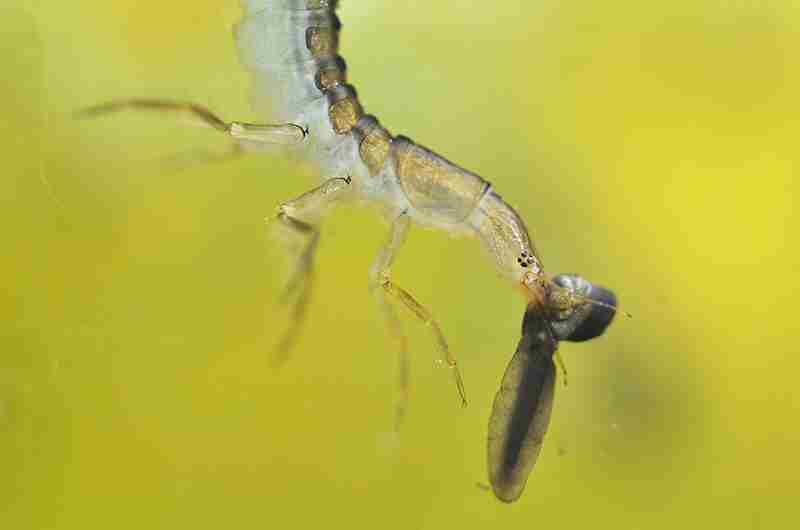
* Outside of the water, birds like herons and raccoons are opportunistic predators that may prey on tadpoles when they venture near the water’s edge. These birds and mammals have keen eyesight and can easily spot tadpoles in the shallows. Similarly, terrestrial animals like foxes and hedgehogs may also consume tadpoles if they have access to the pond.
It’s important to note that the specific predators of tadpoles in a pond can vary depending on the geographical location and the species of tadpoles present. Factors such as the size of the pond, the presence of vegetation, and the availability of alternative food sources can also influence the predation of tadpoles.
Do Fish Eat Frog Eggs?
While many fish will eat tadpole eggs out of curiosity or scarcity of alternative food sources, it is not a preferred food source for them. In fact, many fish species, including goldfish, are unlikely to eat frog eggs.
When considering co-raising fish with frogs and tadpoles, it is helpful to carefully select fish species. Some fish, such as trout, carp, and bass, are more likely to consume tadpoles and frog eggs than others. These fish have a natural inclination towards feeding on smaller aquatic organisms, making them potential predators of frog eggs.
It is important to note that not all fish species pose a threat to frog eggs. Some fish, like goldfish, are less likely to eat frog eggs as a food source. While they may occasionally consume them under certain conditions, it is not a common behavior for goldfish.
Therefore, when planning to co-raise fish and frogs or tadpoles, it is advisable to choose fish species that are less likely to prey on frog eggs. This will help ensure the survival and development of the frog eggs, allowing them to hatch into tadpoles and continue their life cycle undisturbed.
Do Goldfish Eat Frog Eggs?
While goldfish are known to consume various types of aquatic vegetation and small invertebrates, they are not typically inclined to eat frog eggs as a food source. However, there may be rare instances where goldfish consume frog eggs under certain conditions.
Goldfish are omnivorous and have a diverse diet that includes algae, insects, and small crustaceans. They are more likely to feed on plant matter and small organisms that are readily available in their environment. Frog eggs, on the other hand, are not a common part of their natural diet.
It is important to note that the behavior of goldfish can vary depending on factors such as the availability of other food sources and the specific conditions of their habitat. In some cases, if there is a scarcity of alternative food sources, goldfish may consume frog eggs out of curiosity or necessity.
However, it is not a common behavior for goldfish to actively seek out and consume frog eggs. Their preference for other types of food makes them less likely to pose a significant threat to the survival of frog eggs in a cohabitation setting.
When considering co-raising goldfish with frogs or tadpoles, it is still advisable to monitor their interactions and provide ample alternative food sources to ensure the well-being and development of the frog eggs. Selecting appropriate fish species and maintaining a balanced ecosystem increase the likelihood of creating a harmonious environment for both fish and spawning frogs to thrive.
